In the present quick systems administration scene, Course Wavelength Division Multiplexing (CWDM) transceivers are a central innovation for expanding data transfer capacity and streamlining data transmission over optical fiber networks. This article gives an exhaustive guide on CWDM transceivers, specifying their capacities, types, and applications. We will dig into the complexities of SFP modules, examine their differing distances, and feature prescribed procedures to accomplish up to 80km of optical fiber connectivity. Regardless of whether you are a system engineer, IT proficient, or just inquisitive about cutting-edge media transmission advances, this guide will furnish you with the information expected to settle on educated choices concerning CWDM transceiver arrangement and management.
What is a CWDM Transceiver and How Does it Work?
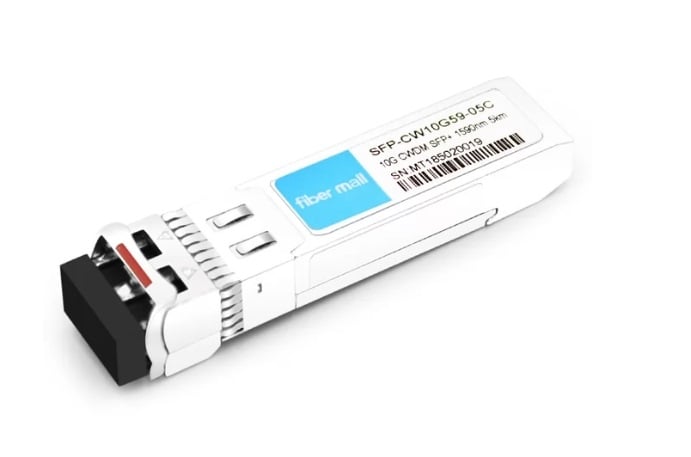
Understanding Coarse Wavelength Division Multiplexing (CWDM)
Coarse Wavelength Division Multiplexing (CWDM) is a technique that utilizes various light wavelengths to increase the amount of data that can be transmitted over one optical fiber. To put it simply, CWDM transceivers work by combining different signals at separate wavelengths on the same fiber, thus creating numerous communication channels. These wavelengths are separated by 20 nanometers and stretch from 1270 nm to 1610 nm. By doing this, the method eliminates the necessity for more fibers and ensures better utilization of current facilities, which makes it cheap when compared with other ways of increasing network capacity without much change in hardware or infrastructure.
Basic Components of a CWDM Transceiver Module
Typically, a CWDM transceiver module is made up of a few main parts: transmitter, receiver, and multiplexing/demultiplexing. On the one hand, the transmitter has a laser diode that generates a light signal at a specific wavelength, while on the other hand, the receiver includes a photodetector used to capture incoming signals. This unit is in charge of putting many wavelengths together onto one fiber and then splitting them out again at receiving end. Moreover, there are often control electronics for signal processing and management functions added into this module type too. All these different pieces work together as one system to ensure data efficiency throughout the CWDM.
Comparing CWDM Transceivers with DWDM Transceivers
To increase the capacity of optical fibers, two technologies are used; Coarse Wavelength Division Multiplexing (CWDM) and Dense Wavelength Division Multiplexing (DWDM). These techniques involve sending multiple light wavelengths down a single fiber. Nevertheless, they have variations in terms of wavelength spacing, capacity and cost.
20 nm is wider than the wavelength spacing used by CWDM systems, which supports 18 channels from 1270nm to 1610nm. This is why it is referred to as a short to medium-distance application whose signal does not need amplification for up to 80 kilometers. Components for a transceivers in this technology are much simpler and cheaper due to the broadness of wavelength spacing, thus making it a low-cost solution applicable in many metros as well as access networks.
Contrarily, DWDM systems can accommodate within C-band alone, even up to 96 channels, because they use very narrow wavelength spacing, usually around 0.8nm (100 GHz) or even narrower, like 0.4nm (50 GHz). With these many wavelengths available data rates are greatly increased therefore it suits long-haul communications such as undersea cabling. Deployment of DWDM requires more expensive transceivers which are sophisticated also amplifiers that will keep signals intact throughout extended distances.
In conclusion; although being less costly with adequate capacity for shorter distances and simple applications where demand is low on bandwidth utilization then CWDM may be considered but if one needs high-bandwidth for long-hauls despite its high price tag along with complexity during deployment because of additional equipment requirements like amplifiers etc., DWDM would serve better.
Which SFP Modules Support 80km Transmission Distance?
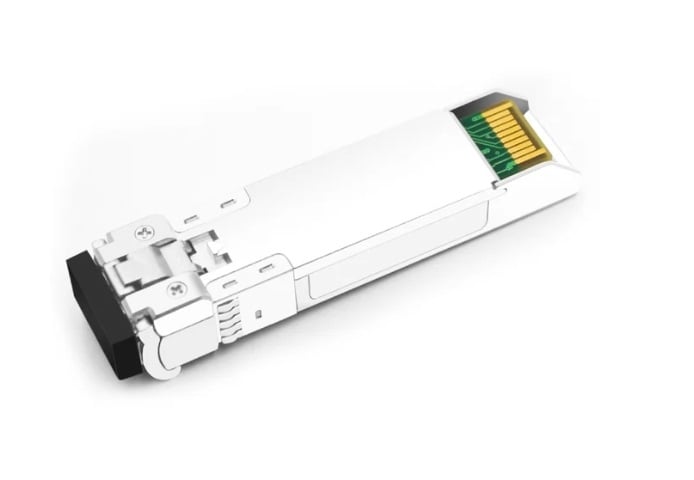
Overview of Long-Range CWDM SFP Modules
To determine which CWDM Small Form-Factor Pluggable (SFP) modules will work for an 80 km transmission distance, it is important to look at what the top manufacturers recommend. In general, long-range communication CWDM SFP modules are made with specific wavelength bands in mind and use advanced optics so that signals do not degrade over greater distances.
- Cisco CWDM SFP Modules: Cisco offers a number of different CWDM SFP modules that can support transmissions up to 80 kilometers in length. Most commonly these operate between the wavelengths of 1470 nm and 1610 nm. Some features described by Cisco include low power consumption, digital optical monitoring (DOM), and hot swapping capabilities which allow networks more flexibility as well as improving reliability.
- Finisar CWDM SFP Modules: Finisar has several types of CWDM SFP modules designed for long-reach applications such as those needed when covering 80km spans. The devices cover wavelengths from 1270nm through to 1610nm inclusive and also have integrated duplex LC connectors, among other things like advanced electronic dispersion compensation (EDC) and high sensitivity to enable them to support longer reaches.
- Juniper Networks’ CWDM SFP Modules: For this vendor, there are specific versions labeled “80 km,” which fit into their wider range of products within the specified wavelength window from 1470-1610 nm. Amongst other attributes, they have low jitter interfaces enabled by hot plugging abilities supporting SONET/SDH plus Ethernet apps, all engineered so as to deliver strong connectivity over significant lengths without compromising on signal integrity.
In conclusion, any major manufacturer’s long-range capable CWDM small form factor pluggables, i.e., Cisco, Finisar, or Juniper Networks, will be quite adequate for supporting transmission distances covering an area of about eighty kilometers. They share some common characteristics aimed at maintaining signal quality where data has to travel far like operating within certain wavelength bands coupled with having sophisticated optical components that can handle such demands.
Factors Influencing the 80km Transmission Range
In order to achieve the transmission range of 80 km, many important factors should be taken into account for CWDM SFP modules:
- Optical Power and Sensitivity: The power that comes out of an optic and how sensitive its receiver is are extremely important. To make sure that signals can travel over long distances without degradation, it is necessary for modules to emit light within a certain power range. In the same way, accurate detection of attenuated signals at the receiving end requires high receiver sensitivity.
- Dispersion and Compensation: Chromatic dispersion happens when different wavelengths of light travel through fiber at slightly different speeds which might distort the signal over extended lengths. Therefore advanced electronic dispersion compensation (EDC) technologies have been integrated into CWDM SFP modules in order to mitigate these effects and preserve integrity of signals.
- Fiber Losses and Connectors: Attenuation losses due to fiber material used, splices made, or connectors installed along the path of transmission could adversely affect it. This calls for low-loss fibers and good-quality connectors, where such losses would be greatly minimized. Fiber type, such as single mode versus multi-mode, also matters, along with its quality, among other factors.
- Wavelength Accuracy: Interference between different channels can be minimized if the ITU-T grid is closely followed during wavelength selection by each CWDM module to achieve the least possible cross-talk; therefore, accurate tuning allows multiple signals to be transmitted simultaneously without degradation over the same fiber.
- Temperature Stability: One of the things that can change performance in optical components very easily are environmental conditions such as temperature variations. Modules that stabilize their temperatures will work reliably even under wide working ranges, hence supporting dependable long-distance transmission.
- Network Design And Maintenance: The initial design must take care of amplification points and regeneration points so that they facilitate continuous operation over large areas. Regularly maintaining fiber conditions contributes towards achieving effective 80km transmissions, too.
Popular Models: Cisco, Arista, and FS.com Europe
To respond to the query about which CWDM SFP modules to look at, it would be helpful to consider Cisco, Arista, and FS.com Europe as these companies offer some of the best models:
- Cisco: Cisco’s CWDM SFPs are known for being reliable and working well with many types of network equipment. For example, a Cisco CWDM-SFP-1470 can support Gigabit Ethernet and Fibre Channel applications up to 80 km and has features such as Digital Optical Monitoring (DOM) that provide feedback in real-time.
- Arista: These are high-performance CWDM SFPs designed specifically for data centers and enterprise networks by Arista. What sets them apart is their low power consumption combined with an extended temperature range, which makes them applicable across various deployment scenarios, including metro and campus networks – one such model being Arista CWDM-1470-60.
- FS.com Europe: This company’s range includes cost-effective yet reliable modules like the CWDM-SFP-1470-80 model, among others. They can work well with products from multiple vendors, thus ensuring smooth integration. They also feature extensive tests coupled with certification protocols aimed at guaranteeing peak performance and reliability.
In conclusion, when it comes to factors such as performance levels, compatibility requirements, or even reliability standards, nothing beats having these three firms’ names in your mouth, i.e., Cisco, Arista, and FS.com Europe, because their CWDM SFPs represent what industry leaders should always strive towards, especially when dealing with long-distance optical networking applications.
How to Ensure Compatibility with Your Network Equipment?
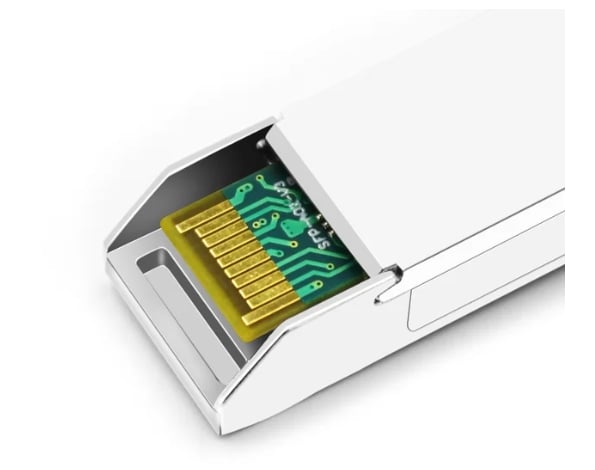
Compatibility Check for CWDM SFP Modules
To guarantee compatibility with your network equipment there need certain measures to be taken when it comes to CWDM SFP modules:
- Establish Vendor Specifications: Look through the datasheets and technical specifications given by vendors of CWDM SFP modules. This will involve confirming the wavelength, data rate as well as transmission distance supported by a module.
- Correspond With Network Equipment: These specifications should then be matched against those required by already established network hardware. For instance, you may have to ensure that your router or switch supports the same type of Cisco’s CWDM-SFP-1470-80 and Arista’s CWDM-1470-60 among others.
- Inspect Firmware Compatibility: Make sure that firmware version running on any one system in use can support this kind of transceiver. Just like some other devices, certain optics may require an update on their software for them perform optimally while still being used within networks.
- Perform Configuration Testing: Prior to doing full installation try out compatibility test using it in a controlled environment such as lab rooms etc., where both hardware and software aspects can easily be changed if need be.
- Manufacturer Guidelines: Check with suppliers’ manuals or contact customer service representatives who have good knowledge about this product line so far sold over their counters. Most manufacturers usually provide matrices that show different model numbers alongside their respective applications, plus many more resources designed to enlighten users on how best they can select these items depending on what kind of network setup is at hand.
Following these steps ensures that the CWDM SFP module will work with other parts of your optic network thus ensuring its reliability and efficiency in general.
Ensuring Seamless Integration with Your Network Switch
To make sure that your network switch is integrated smoothly, a systematic approach based on best practices and insights from top sources should be followed. You need to read through the manufacturer’s documentation very carefully and also check its compatibility lists since they give more information about which modules are supported as well as configurations. Some websites like Cisco, Arista or Juniper Networks stress that you must match CWDM SFP module with specifications of your network switch so that both hardware and software can work together perfectly. In addition to this, it is highly recommended that you should have a structured test phase within a controlled environment for early detection of any potential problem areas. Moreover; tools plus support systems provided by manufacturers such as firmware update utilities along with compatibility matrices can help a lot in making integration faster. When all these points are observed it leads to strong and efficient performance of networks while at the same time minimizing chances of operational disruptions.
Testing and Troubleshooting Compatibility Issues
To test and fix compatibility problems related to CWDM SFP modules, the firmware versions of the network switch and SFP module need to be confirmed first because performance troubles can arise from differences. It is possible to carry out initial evaluations using diagnostic tools supplied by the switch manufacturer to find any abnormality. These may include built-in tests for link integrity, signal quality as well as module identification themselves being among those tools. Should there still be an issue then what should be done is comparing module settings against switch ones following compatibility matrices provided by manufacturers so that all configurations are in line with recommended standards. Keeping records about what errors were discovered could also come in handy together with referring to vendor’s support for further help since they might give exact solutions basing on detailed technical information. This method ensures quick detection and resolution of compatibility problems thus maximizing network efficiency.
What is the Warranty and Support for CWDM Transceivers?
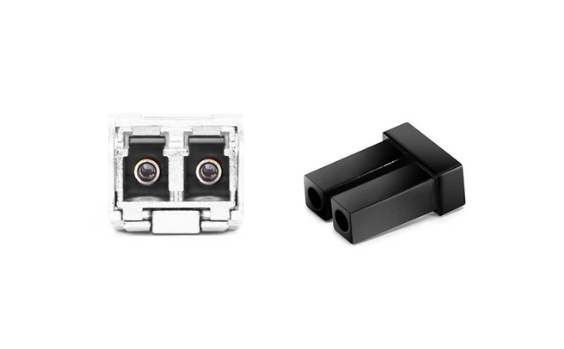
Understanding the Standard Warranty Terms
Usually, the standard warranty agreement for CWDM transceivers lasts for a period of one to five years depending on the brand. This warranty is intended to cover faults that may arise from poor workmanship or use of low quality materials under normal usage conditions. To activate this warranty and ensure future support, it is important to register with the manufacturer.
Within this period, manufacturers repair or replace faulty units at no cost. Some companies provide advanced replacement services to reduce downtime, thereby ensuring continuity of network operations. Additionally, most vendors offer technical support which includes troubleshooting assistance and firmware updates as packaged in their warranties.
Follow the manufacturer’s guidelines for use and retain all purchase records so as to get maximum benefits from your CWDM transceiver warranty. You can also regularly check with the manufacturer’s support resources which may be helpful in keeping your transceivers performing optimally.
Manufacturer Support: Cisco, Arista, and Others
Cisco Support:
In the support of their CWDM transceivers, Cisco has Smart Net Total Care (SNTC) service. This involves a 24/7 access to technical assistance, hardware replacement options as well as software updates. Cisco’s support model guarantees minimum downtime and offers an extensive online knowledge base with community forums for troubleshooting and guidance.
Arista Support:
Arista Networks provides various support options to meet different needs of its customers which include flexible warranty extensions and support subscriptions. The company offers advanced hardware replacement services while technical assistance can be accessed through their support portal which has detailed documentation, software downloads among others staffed by responsive technicians.
Other Manufacturers:
Other major manufacturers like Finisar or Juniper Networks also offer significant levels of after-sales support for the CWDM transceivers they produce. Finisar provides a standard warranty period plus repair facilities that give users access to technical resources, including firmware updates via the company’s website; Juniper Networks supplies advanced replacement units along with product descriptions in detail together with an around-the-clock technical help desk aimed at ensuring optimal network performance is maintained.
The above-mentioned are just a few examples of how top-tier manufacturers such as Cisco, Arista, etc., strive hard towards ensuring full support coverage when it comes to their CWDM transceiver products – they do this by catering for needs relating to hardware replacements and software upgrades in addition to other forms of technical assistance required so as to facilitate continuous efficient operation within networks.
Third-Party Support Options
Alternative services for CWDM transceivers provided by third-party support companies focus on being cost-effective and flexible. Park Place Technologies, Curvature, and SMS Systems Maintenance Services are some of the industry leaders that offer full maintenance coverage options, including hardware replacement as well as IT asset recovery service provision.
Park Place Technologies: With its wide coverage area and fast response rates, Park Place Technologies guarantees continuous operations through anticipatory servicing. It has a self-monitoring system called ParkView™, which is used to identify faults in advance, thus preventing breakdowns.
Curvature: This company specializes in supporting devices made by different manufacturers. They ensure this by providing extended equipment lifetime through their hardware maintenance programs. They do so at affordable rates that entail next-business-day part replacement service backed up with technical assistance offered round the clock globally.
SMS Systems Maintenance Services: SMS has designed these contracts such that they can be customized according to the individual needs of any enterprise. On top of onsite hardware repair services, there is a depot repair service provision, together with technical support, that is necessary for keeping networks reliable and stable.
When selecting between OEM or third party support services for CWDM transceivers, businesses should consider lower pricing models coupled with broader range offerings as well as more flexible terms of service that guarantee continuity and efficiency in operation throughout various organizations processes.
What are the Different Wavelengths Used in CWDM Technology?
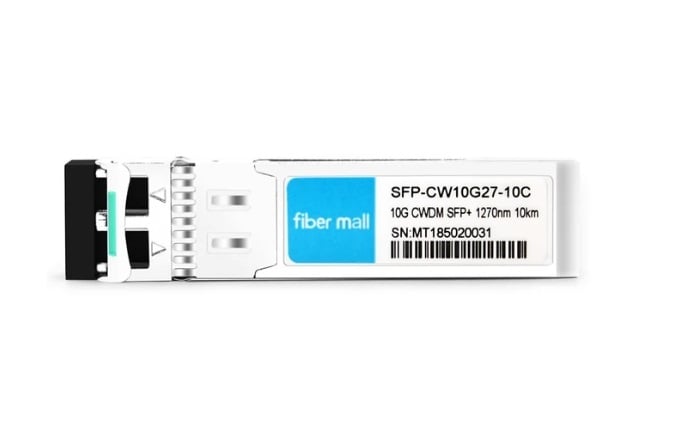
Exploring CWDM Channels from 1270nm to 1610nm
Coarse Wavelength Division Multiplexing (CWDM) technology incorporates several signals into one fiber optic cable by employing different wave lengths of laser beams for transmission. Normally, the CWDM grid consists of 18 wavelength channels, which are spaced 20nm apart, ranging from 1270nm to 1610nm. This range is wide enough to allow different communication services to use CWDM so as to enable fast transfer of data.
Below is a brief description of the wavelengths used in each CWDM channel:
- 1270nm: It is the starting point of the CWDM wavelength spectrum and is mainly utilized in lower wavelength channels demanding applications.
- 1290nm, 1310nm, 1330nm: Like 1270nm, these channels are used for shorter distances within metropolitan area networks.
- 1350nm to 1430nm: These wavelengths have lower loss than the initial ones and can be used for medium-distance transmissions.
- 1450nm to 1610nm: With higher transmission efficiency and lower dispersion rates over long distances, this band is best suited for extended reach applications where it performs quite well.
Utilization of various wavelength channels provided by this technology greatly improves scalability and flexibility in today’s fiber optic communication systems.
How to Choose the Right Wavelength for Your Application
To optimize performance in CWDM systems, it’s important to choose the right wavelength for your application. Here are some things you should keep in mind:
- Application Requirements: Determine what your specific needs are. For instance, lower wavelengths (1270nm–1330nm) work best with short-distance data transmission within metropolitan area networks due to their reduced attenuation and dispersion rates while higher wavelengths (1450nm–1610nm) are required for long-distance transmissions between cities or countries because they have lower attenuation and dispersion rates.
- Transmission Distance: Consider how far the signal needs to travel. If it has to cover a longer distance, then it would be better if you use 1550 nm or 1570 nm, which have low loss characteristics at this range. Alternatively, medium distances can be covered using any wavelength from 1350 nm through 1430 nm.
- Fiber Type and Quality: The type of optical fiber being used should be compatible with the wavelength being employed. Single-mode fibers support more CWDM wavelengths than multimode ones do but they also come with limitations.
- Network Scalability and Future Proofing: Think about what will happen in terms of future expansion when selecting wavelengths during setup; choose those that can scale up easily along other channels as required by growing network size.
Through careful consideration of these factors, one can ensure stronger connections that span across various distances thereby creating robust communication infrastructures through efficient deployment of CWDMs.
Channel Spacing and Multiplexing Techniques
The efficiency of Coarse Wavelength Division Multiplexing (CWDM) systems depends on channel spacing and multiplexing techniques. In most cases, CWDM uses a 20nm channel space. Therefore, compared to Dense Wavelength Division Multiplexing (DWDM), fewer channels are available due to wide spacing and less strict filtering requirements which in turn lowers the cost. Within this space, there can be as many as 18 channels that work between 1270nm and 1610nm wavelengths thereby reducing interference with other signals and crosstalk among them.
In CWDM, multiplexing methods involve bringing together various optical carrier signals into one fiber by assigning different wavelengths for each signal. These passive components include but are not limited to Optical Add/Drop Multiplexers(OADM) and Multiplexer/De-multiplexers (MUX/DEMUX). By doing this, they ensure that the addition or removal of wavelength is done efficiently, hence guaranteeing good signal integrity where even complex network topologies can be achieved.
All in all, it is important to choose the right multiplexing techniques as well as channel spacing if we want our CWDM systems perform optimally at all levels including scalability. Operators should therefore follow industry standards and use best practices so that they can achieve high efficiency while transmitting signals without experiencing much loss or degradation.
Frequently Asked Questions (FAQs)
Q: What is the meaning of CWDM optical transceiver?
A: A CWDM Optical Transceiver, also known as a Coarse Wave Division Multiplexing transceiver, is a device employed in fiber-optic communication networks to transmit data through various wavelengths. It supports multiple channels (1471nm to 1611nm) for increased network capacity and efficiency.
Q: In what way does a CWDM SFP Transceiver differ from a traditional SFP Transceiver?
A: Specifically designed for Coarse Wave Division Multiplexing systems, the CWDM SFP Transceiver enables many different wavelengths within the range of 1270-1610 nm, while normal SFPs only work with one wavelength at a time. With these features, it allows higher data rates and more fiber capacity to be used.
Q: What are some common data rates that can be supported by CWDM SFP Transceivers?
A: Some common data rates supported by CWDM SFP Transceivers include 1.25Gbps for 1000Base Ethernet and up to 10Gbps for 10G Ethernet, SONET, and SDH applications which ensures compatibility with different network standards.
Q: What is the typical range of CWDM wavelengths used in fiber optic communications?
A: The most commonly used range of CWDM wavelengths in fiber optics spans between 1270 nm to 1610 nm, where channels are usually separated by 20 nm. This maximizes the number of different channels that can be supported over a given amount of fiber optic infrastructure.
Q: Can long-distance fiber connections be supported by CWDM sfp transceivers?
A: Yes. CWDM SFP transceivers can support long distance fiber connections. They have variants that can reach distances up to 40km, or even up-to120 km depending on specific transceiver models such as sfp-1040-cxx or sfp-1080-cxx and network requirements.
Q: Can CWDM Optical Transceivers work with current network equipment?
A: Yes, in most cases CWDM Optical Transceivers are designed to work with a wide range of present networking devices; they comply to MSA (Multi-Source Agreement) making them interoperate with hardware from different vendors.
Q: What is the significance of DDM (Digital Diagnostic Monitoring) in CWDM SFP Transceivers?
A: The importance of DDM (Digital Diagnostic Monitoring) in CWDM SFP Transceivers cannot be stressed anymore as it enables real-time monitoring of such parameters as optical power, temperature, voltage, and bias current, which are critical for optimal performance and easy troubleshooting during network failure.
Q: Why should we use CWDM technology in fiber optic networks?
A: There are many reasons why one would choose to use CWDM over other technologies in fibre optic networks; these include higher bandwidth capacity, cost-effective nature due its passive system design and the ability to reuse existing fibre infrastructure by sending multiple data streams at different wavelengths.
Q: What are typical applications for CWDM SFP Transceivers?
A: Generally, CWDM SFP transceivers find their application where there is need for high bandwidths as well as long distance transmissions such as enterprise networks, data centres, metropolitan area networks (MANs), telecom operator networks among others; 10G Ethernet , SONET and SDH applications also widely utilize them.
Related Products:
-
 SFP-CW10G27-10C 10G CWDM SFP+ 1270nm 10km LC SMF DDM Transceiver Module
$60.00
SFP-CW10G27-10C 10G CWDM SFP+ 1270nm 10km LC SMF DDM Transceiver Module
$60.00
-
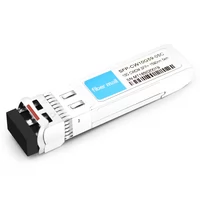 SFP-CW10G59-05C 10G CWDM SFP+ 1590nm 5km LC SMF DDM Transceiver Module
$60.00
SFP-CW10G59-05C 10G CWDM SFP+ 1590nm 5km LC SMF DDM Transceiver Module
$60.00
-
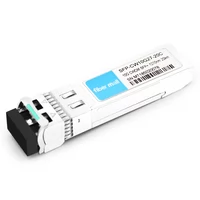 SFP-CW10G27-20C 10G CWDM SFP+ 1270nm 20km LC SMF DDM Transceiver Module
$75.00
SFP-CW10G27-20C 10G CWDM SFP+ 1270nm 20km LC SMF DDM Transceiver Module
$75.00
-
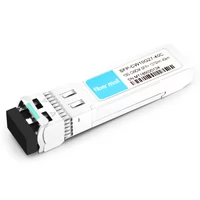 SFP-CW10G27-40C 10G CWDM SFP+ 1270nm 40km LC SMF DDM Transceiver Module
$95.00
SFP-CW10G27-40C 10G CWDM SFP+ 1270nm 40km LC SMF DDM Transceiver Module
$95.00
-
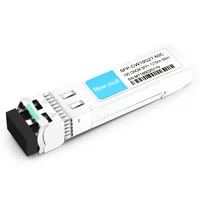 SFP-CW10G27-60C 10G CWDM SFP+ 1270nm 60km LC SMF DDM Transceiver Module
$105.00
SFP-CW10G27-60C 10G CWDM SFP+ 1270nm 60km LC SMF DDM Transceiver Module
$105.00
-
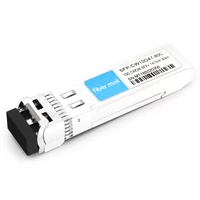 SFP-CW10G47-80C 10G CWDM SFP+ 1470nm 80km LC SMF DDM Transceiver Module
$180.00
SFP-CW10G47-80C 10G CWDM SFP+ 1470nm 80km LC SMF DDM Transceiver Module
$180.00
